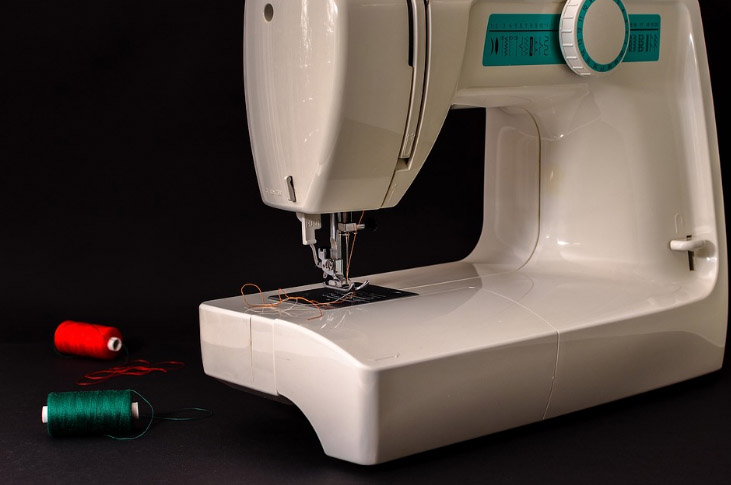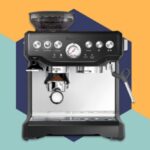You might be surprised to learn how many different sewing machine brands and models are currently available. Anyone who has never sewn before may find it overwhelming. In this article, we’ll talk about serger machines, also known as overlockers or overlocking devices. The first step in locating the machine you require is understanding the differences between a serger machine and a regular sewing machine. From there, all that is left to do is research the specifics of the various brands you are thinking about.
What Is A Serger Sewing Machine?
A serger is a distinctively designed type of sewing machine that produces stitches that look extremely professional while combining three different tasks while you sew. It finishes unfinished fabric edges and sews seams while also trimming seam allowances. Certain tasks can be completed with a serger much more quickly by combining these three features! Are sewing machines and sergers the same thing? No, these two machines are not the same thing, despite the fact that some of their capabilities overlap and many people think they perform the same tasks.
A lockstitch machine is a sewing machine, more specifically a modern machine. This means that a top-thread and bottom-thread loop and lock are used to create a string of secure stitches. These machines frequently offer a variety of decorative or design-oriented stitch options in addition to the very fundamental straight, chain, and zigzag stitches.
What Does A Serger Do?
Serger stitches look very different from the stitches a regular sewing machine produces. In actuality, using this machine results in a very expert-looking finish for home sewers. Furthermore, you can finish a variety of quick sewing tasks because of its effective operation! Perhaps because of this, sewists frequently own both a sewing machine and a serger. Sergers, however, are capable of much more.
Are Serger Machines Difficult To Operate?
Is a serger more challenging to operate than a standard home sewing machine? Many sewers believe that a serger is more difficult to operate, especially those who are unfamiliar with overlocks. The machines’ complex appearance, complete with thread spools and extra buttons, is probably where that notion originated.
So, are they really more difficult to use? No, they are not. But since they operate differently from standard sewing machines, there is a learning curve when you first use them. Additionally, because the majority of sewers start out learning how to use sewing machines, getting used to the differences can be difficult at first.
For instance, threading sergers often cause people to trouble at first. Even though the procedure is more challenging than using a standard sewing machine, it is totally feasible. So that you can refer to it as you become accustomed to the procedure, simply keep your user manual out for a while!
Are Bobbins Used By Sergers?
The lack of bobbins is one thing that sets sergers apart from other sewing machines.
In order to create a lockstitch, sewing machines typically only use two threads (one in the bobbin and one in the needle). On the other hand, sergers utilize looper threads rather than bobbins.
Your threads are held and positioned during stitching by loopers, which are metal rods located inside the machine under the presser foot. You can use multiple threads and bigger thread spools with this setup. In this way, you can sew more quickly and with an effective overlock stitch.
Is A Serger A Good Replacement For My Sewing Machine?
While a serger can complete some tasks entirely, it cannot take the place of a traditional sewing machine. For things like facings, zippers, topstitching, buttonholes, etc., you will still require a standard machine. This work cannot be completed by a serger.
Do I Need A Serger?
Sewing does not require a serger as equipment. It does significantly simplify maintenance for many modern fabrics and greatly strengthens many seams, particularly those in children’s clothing. It is the machine that will give the interiors of your sewed items a manufactured appearance.
Here is the solution to your question of whether purchasing a serger is worthwhile: if you sew regularly or plan to start a home-based An overlocking machine will be helpful for your Etsy store. You may want a serger if you sew clothing for children or sports jerseys that must withstand heavy use and abuse because overlocked seams last longer.
If you only occasionally sew, primarily for yourself or your family, your serger may turn into an incredibly expensive piece of furniture in your craft room. Having said that, a serger probably won’t be able to take the place of your sewing machine. It doesn’t have the features you might need for regular sewing. In fact, if you can only afford or have room for one machine, you’re probably better off getting a sewing machine.

What Is Not A Serger Able To Do?
After reading this, it might seem as though a serger can handle any job. You might even be debating whether a serger would suffice in place of a sewing machine. Sadly, sergers are primarily used to sew seams together and stop fabric edges from fraying. While they can sew some decorative stitches, they cannot perform some essential daily tasks like buttonholes, topstitching, quilting, etc. that are performed by sewers. Because of this, many sewers decide to buy and use both a sewing machine and a serger.
How Quick Is A Serger’s Sewing?
The stitching rates of various sewing machines vary slightly from one another and fall between 1,000 and 1,500 stitches per minute if you were to compare them.
But sergers differ from other machines because they stitch much more quickly—on average, 1,300 to 2,200 stitches per minute. What a time-saving method!
Can You Regularly Sew With A Serger?
Some sewing projects can be finished with just a serger, but some projects call for features that overlocking machines can’t offer. This ultimately depends on the type of sewing you want to do.
You can likely get away with using only a serger if your sewing project calls for a lot of straight seams and possibly some hemming. This will even save you time! Although a serger cannot completely replace a sewing machine, it can be a more effective substitute for many projects because it can perform multiple tasks at once, in contrast to a sewing machine.
Sergers are excellent for sewing on knit fabric because of the characteristics of overlock stitches. These stitches have some give to them. A zigzag stitch can be used on knits in a pinch because regular sewing machine stitches do not stretch.
On the other hand, if you want to make a wedding dress, you’ll need to topstitch, add facings, set sleeves, add a zipper, likely sew on a ton of tiny buttonholes or button loops, and generally do a ton of fiddly, challenging sewing tasks that are best done on a regular sewing machine.
Conclusion
Not all functions are performed by sewing machines and sergers. Despite having different designs and working techniques, they are all capable of carrying out some of the same tasks. Beautiful overlocked seams are the main product of sergers. Despite having a wider range of capabilities, sewing machines cannot produce overlocked seams.
Do you have a preferred sewing machine or serger brand? Have you tried both types of machines? What type of sewing works best on a serger or a sewing machine? Let us know in the comments section below!
Have you ever been stuck in the following problems with sewing machines? Read & Learn more together!
- Why My Sewing Machine Not Making Straight Stitches – How to Adjust
- Why My Sewing Machine Skipping Stitches – How to Fix
- How to Change Sewing Machine Needle With Simple Methods
- How To Clean Your Sewing Machine With Simple Steps
- Why Does My Sewing Machine Keep Jamming – How To Solve
- How To Hem Pants By Sewing Machine In The Easy Way
- How to Use Brother Sewing Machine – Beginner Guide 2022
- How To Use A Sewing Machine: Step-By-Step Instruction
- How To Thread A Sewing Machine: Step-By-Step Instruction











